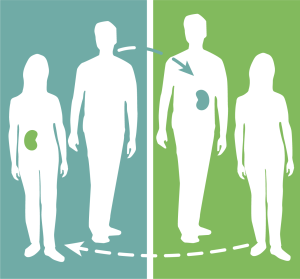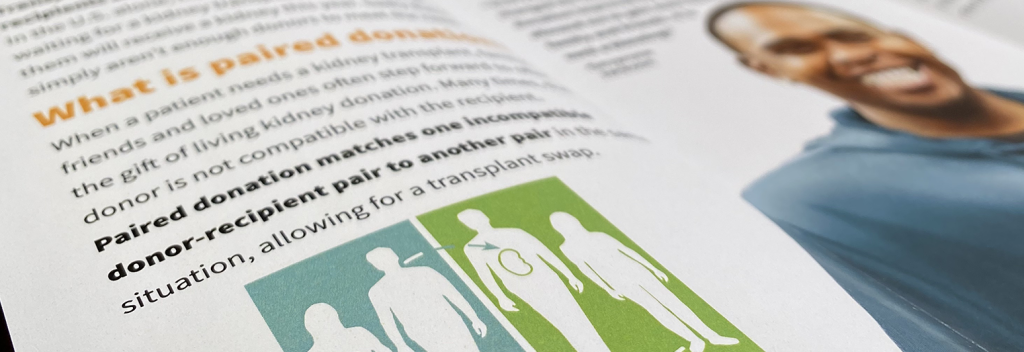Kidney transplants are a unique type of transplant because they can accommodate a live donor. In theory, this should increase the number of successful matches because kidney transplant patients can tap into friends and family who are willing to help them through their medical challenges.
Many people in need of a lifesaving kidney transplant have willing family members who are not a match due to tissue or blood type incompatibilities. Other times, a family member could be a match but is not able to undergo the procedure for medical reasons. Paired kidney exchange provides a workable solution that can satisfy the needs of all parties. Here is a closer look at how this process works and the ways it benefits patients, donors, and medical facilities.
 What Is Paired Kidney Donation?
What Is Paired Kidney Donation?
A paired kidney donation occurs when a living donor who is incompatible with the recipient they know matches with another person waiting for a kidney. The second recipient finds a donor that matches with the first recipient, and the donors and recipients swap. Both people in need of a transplant can get one, and both willing donors can help.
How Do We Make It Work?
Paired kidney donation works quite well, but only when both people in need of a lifesaving kidney have a donor willing to give a kidney to a stranger. When transplant centers utilize the APKD KidneyMatch software, incompatible pairs of donors and recipients can enter the donation registry, allowing potential paired kidney donation matches to be made. When a transplant center partners with the Alliance for Paired Kidney Donation, living donors have a greater opportunity to help their non-compatible loved one.
How Paired Kidney Donation Benefits Donors
Paired kidney donation allows people who want to be living donors to save a life, even if the person they know and want to help is incompatible with them. The ability to donate brings significant satisfaction, and that satisfaction increases when they know their donation ultimately allowed their friend or relative to find a matching donor as well. The beauty of paired kidney donation is that most willing donors can help another recipient while also helping their loved one find a recipient.
How Paired Kidney Donation Benefits Recipients
The paired kidney donation process increases the likelihood that a successful match is made. Through our algorithm, we are seeing a 50% increase in the number of matches over traditional living donation alone.
How Paired Kidney Donation Helps Transplant Centers and Medical Facilities
The APKD KidneyMatch software makes it faster and easier for transplant centers to find matches for their patients. It lessens the amount of time and effort transplant coordinators must use to find and make successful matches. Participating facilities can see more successful outcomes for their kidney transplant candidates thanks to true internal matching. We believe that through this partnership we are providing living donors with a way to donate and possibly save more than one life in the process.
Is Paired Kidney Donation Right for You?
If you are a kidney transplant candidate waiting for a transplant and you know someone willing to donate, inquiring with your transplant center about paired kidney exchange is the first step to becoming a part of the APKD database. This might increase the chances of finding a match for you.
If you are someone who wants to donate a kidney to help a loved one, and you are feeling the frustration of not being a compatible match, then paired kidney donation may allow you to get your loved one transplanted.
Finally, if you are working in a transplant center, partnering with the Alliance for Paired Kidney Donation can provide true internal matching that you need to help your patients in a more comprehensive way while elevating your lifesaving mission to regional or national collaboration to save more lives.
To learn more about paired kidney exchange and ways it might help you, reach out to the Alliance for Paired Kidney Donation.

